These days, life can mean a lot more than just having shelter, food, and clothing. People have evolved a great deal over the past 50 years, and the trend of exponential change is continuing. The differences between generations will be more significant than they are now. Random bursts of non-conformism mean that some people no longer feel represented by the masses and feel they can’t be associated with large institutions.
This non-conformism has a residential component: People live in increasingly diverse houses that best suit their needs. Some people buy large houses made of concrete, steel, and glass to reinforce their social positions; others choose something different. Either way, it’s something that suits their needs. One crazy idea is to live in a storage container home. Yes, you heard me. Old cargo containers now serve as a part of a home or even the entire house for some people.
While shipping container homes are certainly an option, no one should rush into a decision. Let’s look at some beautiful structures that might help you decide if living in a shipping container home is right for you.
01. Shipping Container Guest House
One of the most exciting projects I’ve seen is this wonderful guest house made out of a recycled shipping container. People always take this as a challenge; in this case, the result turned out great. The container was painted blue and two sections were cut out and replaced with windows and big sliding doors. Because of the container’s shape and nature, there isn’t a wide range of possibilities for decorating.
The house has a small patio in front and a partial roof above it to shield the rain from splashing directly into the door. The interior features wood paneling on the walls, which provides a feeling of warmth and comfort.
Bold combinations of colors and materials make this structure a fine place to hang out and enjoy the surrounding landscape. This unique container house was designed by Poteet Architects, which has undertaken a number of projects involving shipping containers.
02. Kalkin’s Shipping Container Homes
This creation defies everything you thought you knew about houses. This beauty is made out of shipping containers. New Jersey architect Adam Kalkin designed and built his own house from recycled shipping containers. Among the many reasons to do that is durability, but also price: A used storage container costs under $1000.
This house is huge and has many different levels. You could say this is a “house in a house,” because inside the massive building is smaller individual components that look like rooms in a traditional house. In fact, the indoors are melded with the outdoors with massive sliding glass doors and by house-like structures built inside.
 It’s easy to get confused about this home. It’s not a traditional house for sure, but what is it? It has bedrooms, bathrooms, living rooms, and a kitchen so it fulfills our modern needs, but what about aesthetics? If I really have said, I could definitely answer, “It’s unique!”
It’s easy to get confused about this home. It’s not a traditional house for sure, but what is it? It has bedrooms, bathrooms, living rooms, and a kitchen so it fulfills our modern needs, but what about aesthetics? If I really have said, I could definitely answer, “It’s unique!”
03. Painted Shipping Containers
Another impressive project comes from Brazilian Architect Marcio Kogan. This maritime shipping container home was born from the idea of using industrial elements that can be easily assembled in a brief period. To deal with the special limitations imposed by the predetermined size of the containers, they stacked the containers on top of one another.
 As soon as the height limitation was solved, the architects focused their attention on width. To solve this issue, they created a space that is as high as two containers but is also wider. In that space, they were able to arrange a great living area that can extend outdoors thanks to a clever retractable system of doors.
As soon as the height limitation was solved, the architects focused their attention on width. To solve this issue, they created a space that is as high as two containers but is also wider. In that space, they were able to arrange a great living area that can extend outdoors thanks to a clever retractable system of doors.
This house has all the facilities you would find in a regular home, just in a different style and unique shell. Along with the vivid colors and green environment comes the spirit of a youthful space complete with fun and joy.
04. Starbucks Made From Shipping Containers
So far, we’ve seen shipping containers used as living spaces, but here is a bold idea from a businessman who envisioned his new Starbucks building a little bit differently. His crazy idea came from Starbucks’ extensive use of these containers to ship their coffee and tea worldwide.
Perhaps this is an excellent strategy – maybe just wanting to associate their products with freshness. The design is unique even for a take-out fast food type of building, but perhaps this particular fact made it possible.
 Because the new building can house only coffee machinery and a small working area for the employees, a used shipping container made this a perfect choice. It’s cool and exciting and can be emulated by other businesses that don’t necessarily need ample indoor space.
Because the new building can house only coffee machinery and a small working area for the employees, a used shipping container made this a perfect choice. It’s cool and exciting and can be emulated by other businesses that don’t necessarily need ample indoor space.
This alternative is fast, easy, and less expensive, and after you’re done using it, you can always recycle it for an extra few bucks.
05. Maison Container By Patrick Partouche
Now let’s take a look at a more complex project. In 2010, French architect Patrick Partouche designed a place that imitates a traditional house even though it is built from cargo containers. This contemporary container house has approximately 2,240 square feet and costs around 221,000 euros.
The house looks spacious and modern, thanks to modern appliances and furniture. As we can see, it is made from multiple containers cut into different sections either to achieve a larger interior space with excellent living and dining areas or to accommodate large windows and doors. On the upper floor, exceptional living solutions were implemented, united by metal stairways and bridges.
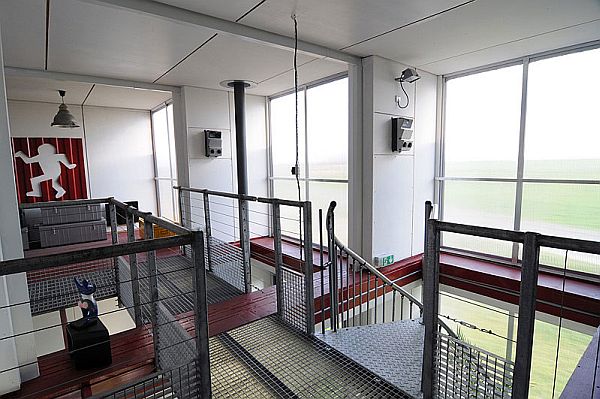 The design allows for plenty of natural light, which makes each metal corner or junction shine, highlighting the industrial theme. What I like most about this house is that they kept the container’s doors, leaving the owners possibly closing them for total privacy.
The design allows for plenty of natural light, which makes each metal corner or junction shine, highlighting the industrial theme. What I like most about this house is that they kept the container’s doors, leaving the owners possibly closing them for total privacy.
06. Containers Of Hope, A $40,000 Home By Benjamin Garcia Saxe
With just $40,00, Benjamin Garcia Saxe built an exciting place to live in Costa Rica. This project concentrates more on its communion with nature than the actual building. The house is very chic and modern, but it requires few materials and little space to be functional.
We all tend to build vast spaces that are often left unused, but this design focuses more on what we do and don’t need. Let me tell you what we need: a Sunrise and a sunset through those beautiful large windows. We need comfort, and we need style. We can achieve all these within precisely 1,000 square feet thanks to modern furniture and quality finishings.
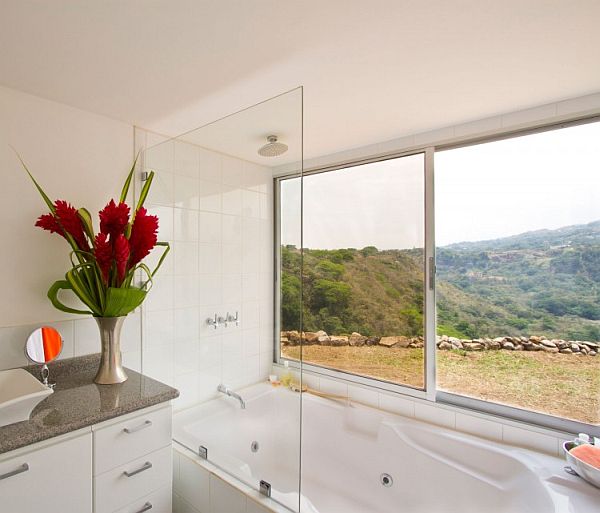 I would have to say that this is a place for the soul and eyes. An intimate, cozy house with the best view over the landscape is probably what many of us would want. Well, as this house demonstrates, it is possible to have just that with just two shipping containers.
I would have to say that this is a place for the soul and eyes. An intimate, cozy house with the best view over the landscape is probably what many of us would want. Well, as this house demonstrates, it is possible to have just that with just two shipping containers.
07. Shipping Container House In El Tiemblo
This residential project involves four 40-foot shipping containers, and although it may not look so great from the outside, the inside, I assure you, is superb. Designed by studio James & Mau Arquitectura and built by Infiniski, this container house is located in the province of Ávila, Spain, and is named “Casa El Tiamblo.”
With a cost of about 140,000 Euros, this modern example of style and comfort has all the amenities of a traditional house, with a big kitchen, a great open living room surrounded only by huge windows, comfortable bedrooms, and trendy furniture.
 The most appreciated area is probably the lower level because it features sliding doors to the patio, which creates a space where you can relax and feel the fresh air that circulates, ventilating the home. Furniture makes this interior look no different than a traditional one, and perhaps that is why feels so cozy inside and modern and stylish compared to the raw industrial exterior.
The most appreciated area is probably the lower level because it features sliding doors to the patio, which creates a space where you can relax and feel the fresh air that circulates, ventilating the home. Furniture makes this interior look no different than a traditional one, and perhaps that is why feels so cozy inside and modern and stylish compared to the raw industrial exterior.
08. First Shipping Container House In The Mojave Desert By Ecotech Design
If so far we’ve seen homes constructed in a less practiced manner, this model by Ecotech Design brings the shipping container house to another level. Located in the Mojave Desert, the one-bedroom, one-and-a-half bathroom home has 2,300 square feet and is made from six containers.
The design speaks for itself; perfect for those interested in more than just shelter. This unique construction features a modern interior with an open concept floor plan, plenty of natural light, and an exterior that combines shady places with a wide-open yard. I must admit that I would never have guessed if no one had told me that this home is made from containers. It looks like a modern home built with a particular eco spirit.
 This fantastic structure combines high-energy efficiency and mass-production modular designs, making it a low-cost, sustainable housing system. If we take a look at current trends, I would predict that soon we’ll be seeing more and more of these structures all over the world.
This fantastic structure combines high-energy efficiency and mass-production modular designs, making it a low-cost, sustainable housing system. If we take a look at current trends, I would predict that soon we’ll be seeing more and more of these structures all over the world.
09. Five Shipping Containers Into A Cozy Modern Home
This incredible house shocks me through its brightness, layout, and amenities. In this project, we can see two elements you would never expect to work for hand in hand: Open space and shipping containers. This house boasts 2,600 square feet of comfortable living space made from only five shipping containers. It has cutting-edge features such as a green roof, geothermal heating, and high-tech foam insulation to preserve an optimal living environment.
 This entire home has a playful air and must have been a fun project to design and build, but it is certainly not a joke. This is a natural, regular home for a happy, functional family. The cold metal industrial style has been dramatically softened with bright, vivid colors and modern furniture. I love how this project turned out, given the materials used to build it. Superb design and excellent living space!
This entire home has a playful air and must have been a fun project to design and build, but it is certainly not a joke. This is a natural, regular home for a happy, functional family. The cold metal industrial style has been dramatically softened with bright, vivid colors and modern furniture. I love how this project turned out, given the materials used to build it. Superb design and excellent living space!
10. Shipping Container Conversion By Building Lab Inc.
Designer Stephen Schouptook advantage of shipping containers when it came time to build a space for his expanding company. Environmental and sustainability concerns convinced him to opt for an unusual way to create the additional work area. After much deliberation, he decided on an L-shaped shipping container office by Lab inc.
The great thing about this structure is that it allowed Schoup to incorporate leftover materials and supplies he had laying around the courtyard. The result balances industrial style and a warehouse appearance with the great open space around the structure.
This office reflects the residential theme appropriate for the area even though it is constructed in a non-traditional way. The interior design maximizes the potential of the space and is perfect for an office area. The well-equipped space includes everything employees might need and a small meeting area.
11. Eco-Friendly CrossBox House By Cg Architects
Here’s proof that the container house phenomenon is spreading worldwide and that each project reflects the region’s and architect’s design preferences: In France, Clément Gillet Architects built an eco-friendly prefabricated single-family home. The main ingredient in this successful recipe was some old shipping containers.
The home has approximately 1,120 square feet, and it’s a prototype for a modular industrial house constructed from four containers. The main aim behind this project is to build low-cost architect’s houses while focusing on the environment. The home’s great success is due to its straightforward design, with a living area on the ground floor and three bedrooms on the upper floor.
 The entrance, which is between the two sections, is also used as a carport. The interior is well finished with bright colors and furniture that creates the impression of vast space, and the wooden accents warm the entire house, making it a great place to live.
The entrance, which is between the two sections, is also used as a carport. The interior is well finished with bright colors and furniture that creates the impression of vast space, and the wooden accents warm the entire house, making it a great place to live.
12. Week House From Shipping Containers
The traditional real estate market is known for constantly rising prices, which is exactly what pushes people to seek alternatives. Jure Kotonik has an answer to that issue: He designed a two-story, 300-square-foot container house that significantly benefits its owners. It has a very low-end cost compared to traditional housing, is assembled in a matter of days, and, most of all, is easy to move.
 This is better described as a mini-housing solution offering only the basic necessities for living. Itcould be a tremendously stylish temporary solution if you’re planning to invest a more considerable amount of money in your dream house.
This is better described as a mini-housing solution offering only the basic necessities for living. Itcould be a tremendously stylish temporary solution if you’re planning to invest a more considerable amount of money in your dream house.
The pink-dotted façade illustrates its versatility and the opportunity for expressing yourself so others can see your true spirit. The interior can be furnished stylishly but in a very minimalist manner and the upper floor is accessible through an adjustable staircase.
13. Alterra Beach Resort Uses Shipping Containers For Private Glamping Cabins
Most of the people who are really into the whole container housing thing tend to build and design structures for their personal use. Architect ClorindoTesta thought about using shipping containers for others to use. AlterraGlamping is a natural resort near Pinamar Beach in Argentina that wonderfully combines the art of outdoor relaxation and sustainability by using old shipping containers as private cabins.
 The minimalist look of the containers focuses attention on the paradise outside. The resort was originally an art gallery, so transforming it into a hotel involved changing some of the spaces and adding more cabins. It is important to know that no trees were harmed during construction and the main house still functions as a gallery.
The minimalist look of the containers focuses attention on the paradise outside. The resort was originally an art gallery, so transforming it into a hotel involved changing some of the spaces and adding more cabins. It is important to know that no trees were harmed during construction and the main house still functions as a gallery.
So, you can look at this location as a place for the body as well as the soul, with prices starting around $US1,100 per week. Think of it as a very cool camping site with the best amenities for a truly relaxing experience.
14. Jean Nouvel’s Shipping Container Restaurant
Another interesting project was created by French architect Jean Nouvel. He imagined LES GRANDE TABLES as a large timber frame structure wrapped in glass, and as we can see, it turned out pretty good actually.
His 1,000-square-foot restaurant is made from recycled cargo containers with bare-bones scaffolding around it for a true minimalist industrial look. It accommodates more than 120 people and is also used for parties, weddings, and cultural meetings.
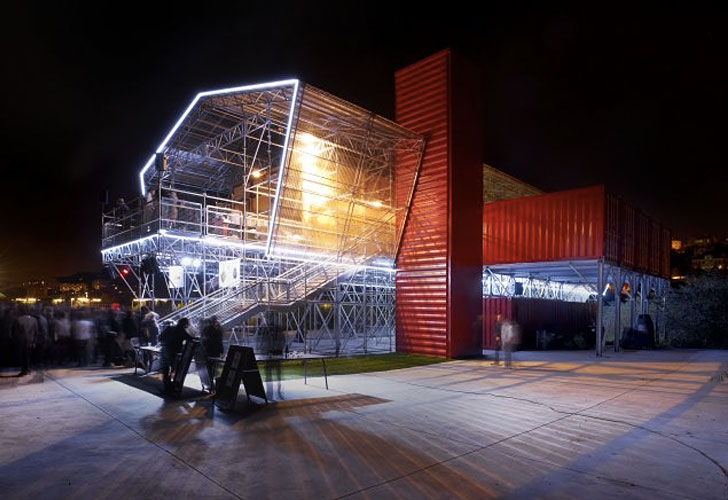 While part of a larger project, this structure is the main attraction because the restaurant serves French cuisine prepared by the renowned chef Arnaud Daguin, using locally grown herbs and vegetables. When night falls, the place livens up, attracting people who live a particular lifestyle.
While part of a larger project, this structure is the main attraction because the restaurant serves French cuisine prepared by the renowned chef Arnaud Daguin, using locally grown herbs and vegetables. When night falls, the place livens up, attracting people who live a particular lifestyle.
The French are well known for their sophistication and revolutionary thinking, which makes them leaders in design trends and tastes. Looking at this structure, we can very quickly see why.
15. London’s First Pop-Up Shipping Container Mall Opens In Shoreditch
Commercial spaces come in different shapes and designs to attract as many clients as possible through an appealing design. Boxpark Shoreditch is London’s first pop-up shopping mall made from shipping containers. This crazy mini shopping center is convenient, pedestrian-friendly, and packed with some of the most popular stores.
The design makes maximum use of the compact space in contrast totraditional shopping malls with huge parking lots and endless pathways. The mall is made from 61 containers, and 41 are situated in the ground section in a simple rectangular footprint.
 The ingenious idea come straight out of a purely economic principle. Small brands find it almost impossible to rent a big space in a fancy shopping center, limiting their ability to reach the general public with their products. This Box Park alleviated that issue and almost any entrepreneur can afford to rent one of the commercial spaces.
The ingenious idea come straight out of a purely economic principle. Small brands find it almost impossible to rent a big space in a fancy shopping center, limiting their ability to reach the general public with their products. This Box Park alleviated that issue and almost any entrepreneur can afford to rent one of the commercial spaces.
16. 25 Hours Hafen City Hotel
Let’s switch up a little from French sophistication and move a little north to Germany. Stephen Williams Associates designed an exciting, eclectic hotel inspired by sailing and shipping here.
Using nautical décor in the shipping containers, such as ropes, rotors, and other elements, created the impression of a raw, industrial shipping warehouse. 25Hours HafenCity Hotel has each room decorated to look like a cabin from a ship.
 The lobby is the most exciting area, featuring a variety of seating and lounging options, as well as the hotel’s restaurant, which serves local dishes made with local ingredients.
The lobby is the most exciting area, featuring a variety of seating and lounging options, as well as the hotel’s restaurant, which serves local dishes made with local ingredients.
The rooftop is also made from a container, and it houses the “Hafen Sauna,” with panoramic views over the entire harbor. This unique project wouldn’t be possible without the containers donated by Hamburg’s own Hapag-Lloyd and other scrap materials from around the shipyard.
17. Another Mall Project Made From Shipping Containers
A shipping container-based mall project was also opened in New Zealand, but it is on a whole other scale and with a different philosophy. After being devastated by an earthquake, the Christchurch area was rebuilt. This brightly colored shopping facility houses 27 stores and is meant to bring certain normalcy to the site, but it is still not enough.
The benefit of using cargo containers is that it makes people feel safe. I can’t imagine how all those people, shaken by nature’s rage, can venture out again into a town center with tall buildings, some still standing and some having been destroyed. This meaningful project is more than a shopping facility — it is an element of safety for those residents.
 The project’s structure is not one of the equally compartmented spaces, so some businesses benefit from larger spaces than others. The New Zealand mall’s design is also disputed by the developers of the Boxpark Mall we’ve shown above, which claim intellectual property theft and are pursuing legal action.
The project’s structure is not one of the equally compartmented spaces, so some businesses benefit from larger spaces than others. The New Zealand mall’s design is also disputed by the developers of the Boxpark Mall we’ve shown above, which claim intellectual property theft and are pursuing legal action.
18. Spacious Prefab House From A Shipping Container
I firmly believe that this, by far, is the most significant project ever that involves shipping containers. It is called the WIngHouse, and guess what? It unfolds as a spacious house from a single cargo container.
The principle is relatively simple: Pack everything into a container so it will be easy to transport anywhere. Set it on the ground, and then the walls of the container unit rise like wings with a built-in crane to create a large butterfly roof. Inside, panels are inserted to make doors and windows.
 TheWingHouse revolutionizes not just the concept of home but also that of moving your home. The result is impressive: A quite ample interior space that can be finished in multiple ways because there are no internal supports in the way.
TheWingHouse revolutionizes not just the concept of home but also that of moving your home. The result is impressive: A quite ample interior space that can be finished in multiple ways because there are no internal supports in the way.
Thanks to this feature, this wonderful home can accommodate three bedrooms just like a traditional home, or it can be transformed into an eight-bedroom dorm, an office, or just about anything you would like.
19. New Zealand On Screen Uses Recycled Shipping Containers & Caravans To Show Off Kiwi Films
A project called New Zealand on Screen features TV and music videos right on cargo containers. The Kiwi Films organization wanted something original to engage visitors using hi-tech facilities and gadgets, so they equipped some containers and transformed them into interactive media rooms.
 Inside, people can enjoy and experience a state-of-the-art interactive video wall and many other excellent applications. The owners opted for a vintage décor to go hand in hand with classic films and bring back a certain nostalgia.
Inside, people can enjoy and experience a state-of-the-art interactive video wall and many other excellent applications. The owners opted for a vintage décor to go hand in hand with classic films and bring back a certain nostalgia.
The idea behind this project was t combine the offline and online environments to give the media content more currency without building a museum or a movie theatre. Now it is easy to understand why they chose shipping containers. From the outside, the facility looks casual, like a stationary truck painted colorfully.
20. Shipping Container Architecture
This single-family house, designed by Jason Welty, is a perfect example of industrial elegance. Although the metal frame was not covered but only painted white, the overall feel is of refinement. This is also a grand design project created from shipping containers.
The interior is compartmentalized into two floors. On the lower level, we find a big open living area furnished with plenty of natural light from multiple large windows. Upstairs, there are the bedrooms, also furnished in the same style.
 Focusing on sustainability, this house has solar panels on the roof and several wind turbines. The exterior color attempts to blend the building into the natural décor.
Focusing on sustainability, this house has solar panels on the roof and several wind turbines. The exterior color attempts to blend the building into the natural décor.
The lot is in a lovely area with a spacious grassy backyard and a pond. Suddenly, cargo container homes look stylish and environmentally friendly. I would love to see more and more of these buildings rising soon.
21. Container Summer Residence
In this project, we see how a standard shipping container transforms into a summer residence, perfect for nature lovers. Similar to those who go camping in the summertime, some people decide to build their summer residence.
All they need is a good cleaning to remove any rust and some paint, and the containers are ready to accommodate you quite rustically. It’s summertime, so you only need basic shelter to protect you from rain, wind, and wildlife.
 A big issue with steel containers is insulation, and in this particular environment, with almost 300 days of sunshine per year, heat is a serious problem. A new product has been developed to reflect the sun’s heat and act as an insulator, called SUPER THERM, a very effective ceramic paint with remarkable effects.
A big issue with steel containers is insulation, and in this particular environment, with almost 300 days of sunshine per year, heat is a serious problem. A new product has been developed to reflect the sun’s heat and act as an insulator, called SUPER THERM, a very effective ceramic paint with remarkable effects.
These two containers have a small shaded area created with a simple cane roof, perfect for eating, working, or relaxing while you enjoy the fresh air without the sun burning your skin.
22. Yuka Yoneda Tommy Hilfiger’s Berlin Shipping Container
This project, built by Art department-Berlin, was presented at the Bread&Butterfashio trade show. The Tommy Hilfiger brand was represented by a contemporary structure made entirely of recycled cargo containers stacked in various shapes and covered in eye-catching graphics.
This dynamic environment reflects the energy of the Hilfiger aesthetics while at the same time using eco-friendly materials both inside and out. To paint a mental picture of how fast these structures can be assembled and functional, I have to mention that the containers only required one day to be arranged, three days for rough construction (cutting, welding, mounting stairs, lights, etc.), and another three days to finish the interior.
Imagine that you can already live in a house constructed by the same principle in this amount of time. Imagine that you can have dinner in your place to call home in just one or two weeks.
Like what you’re reading? Subscribe to our top stories.






































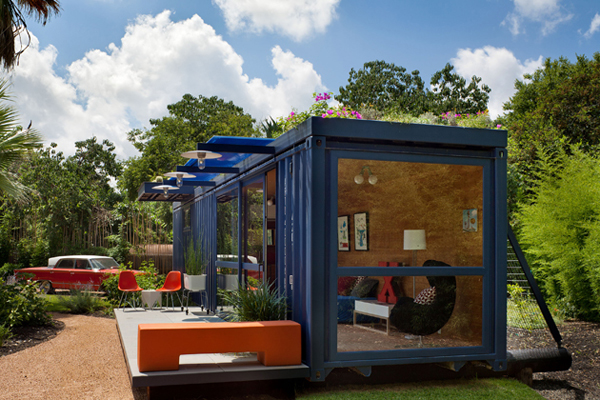


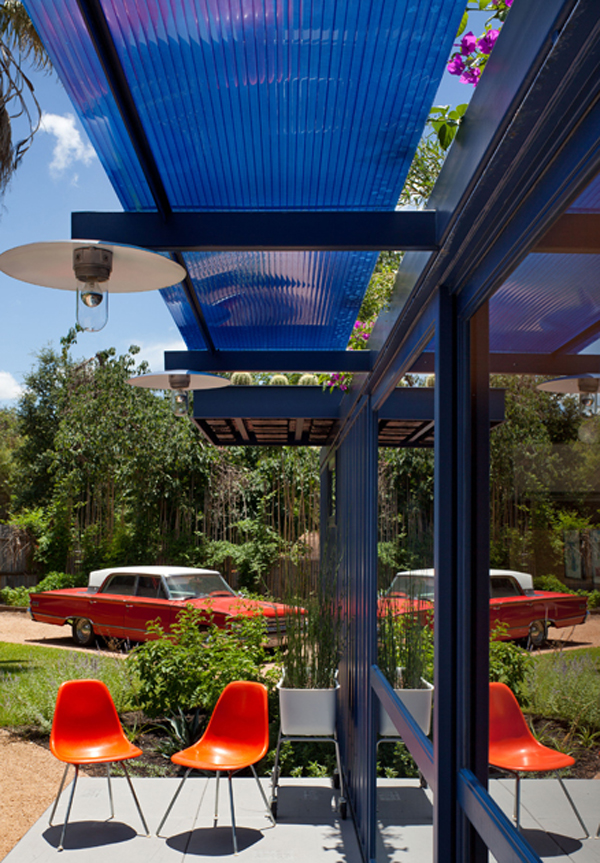












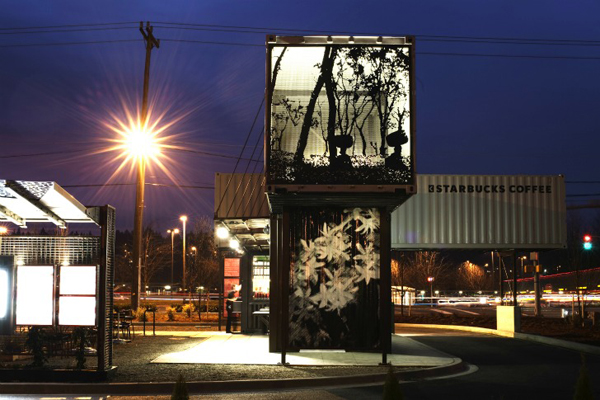

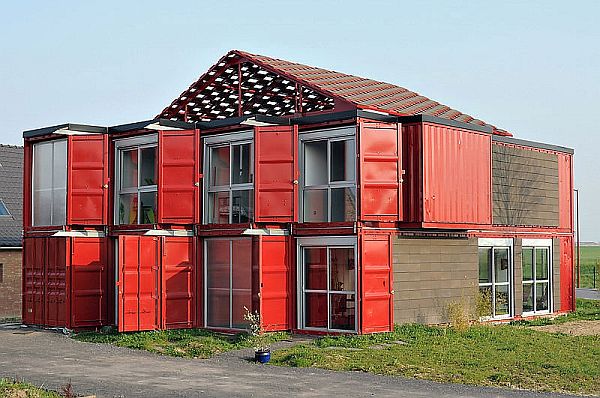






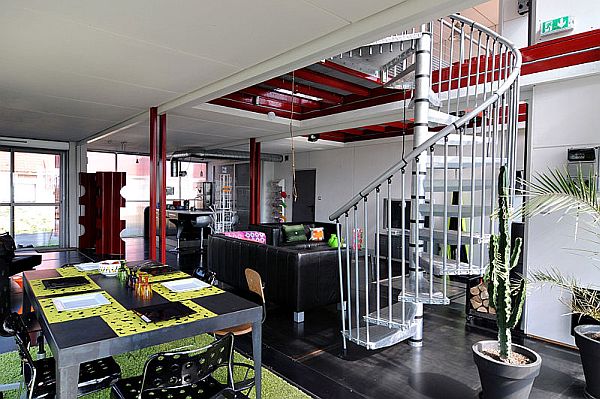


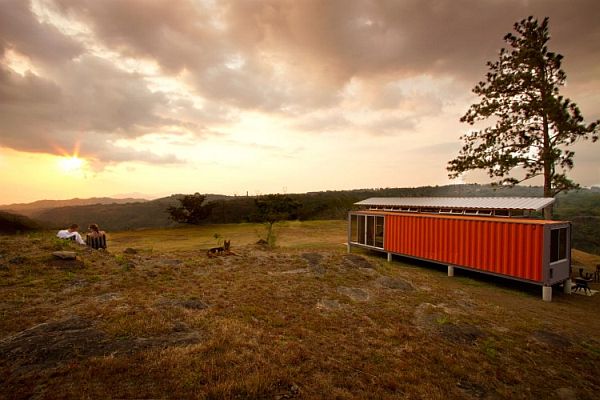










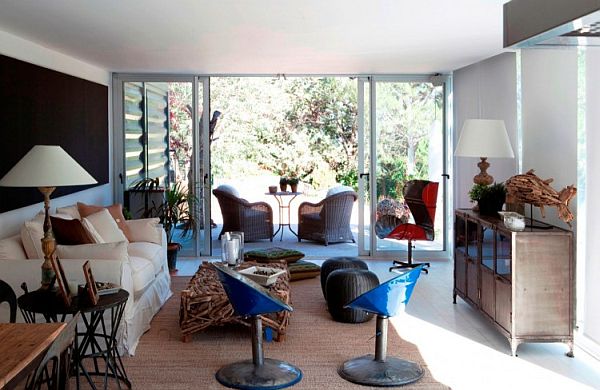



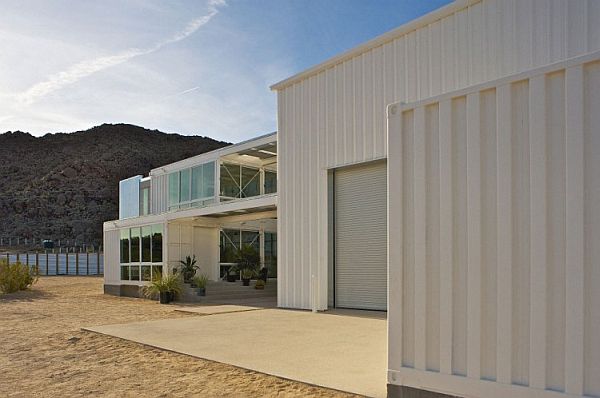









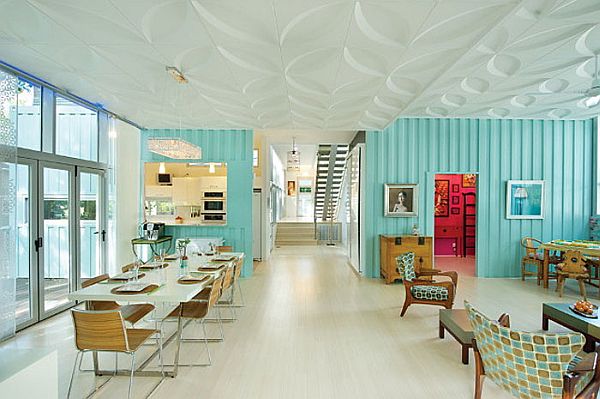



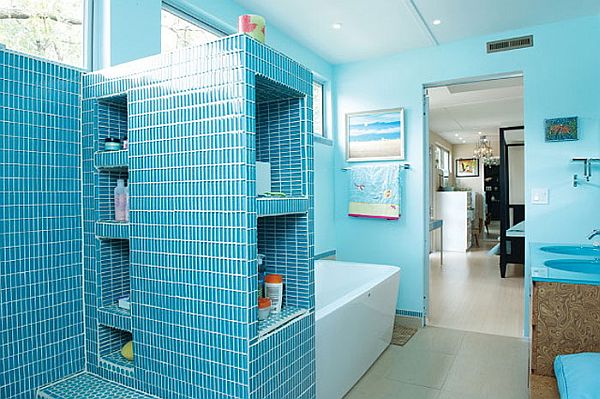







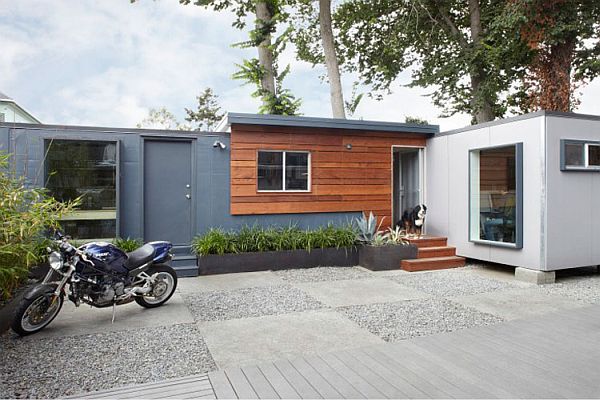









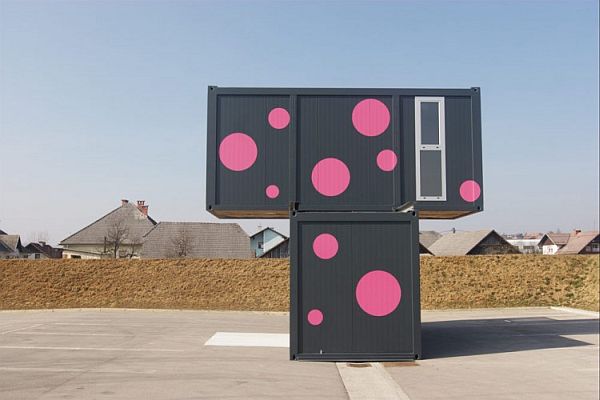


















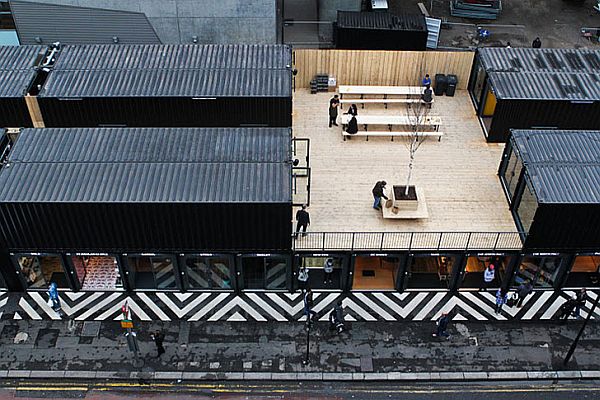












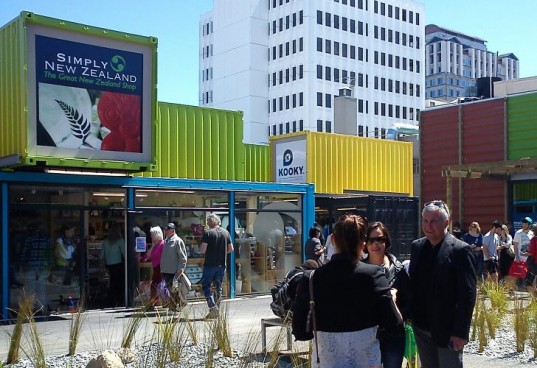





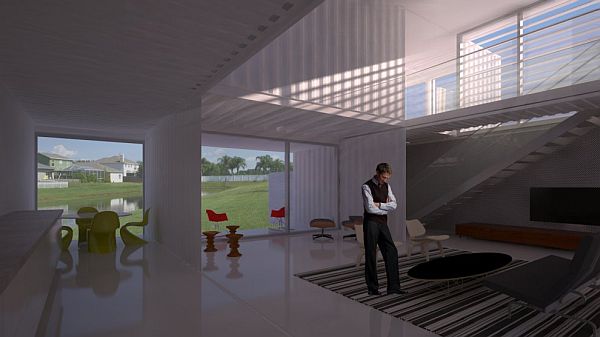


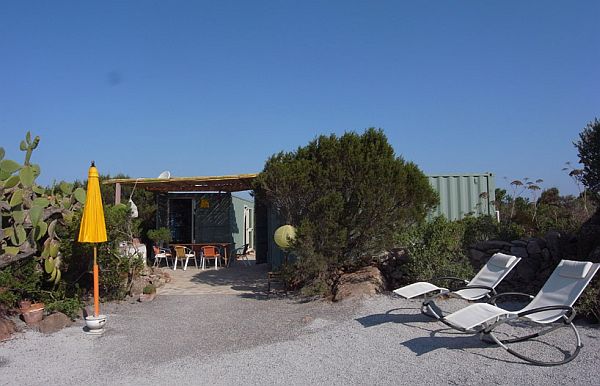

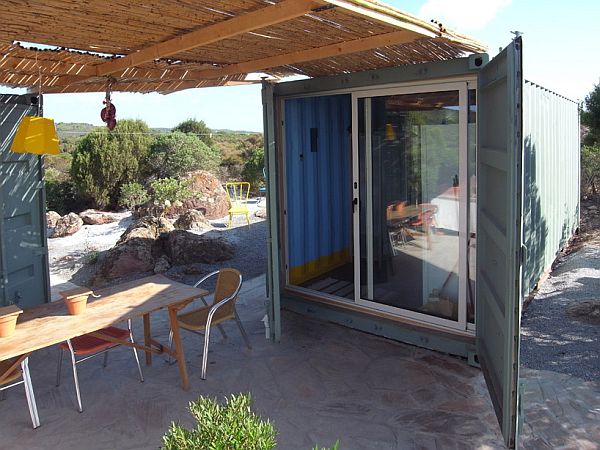







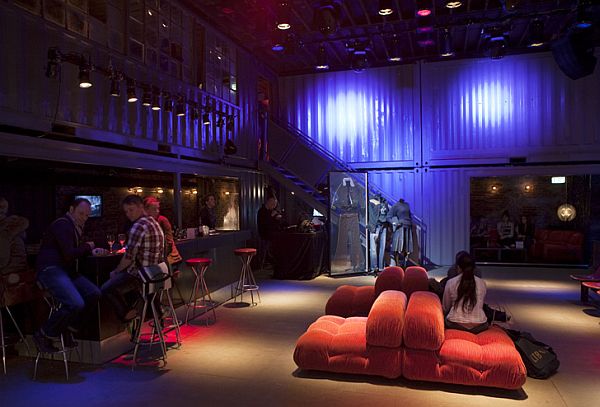









Discussion about this post